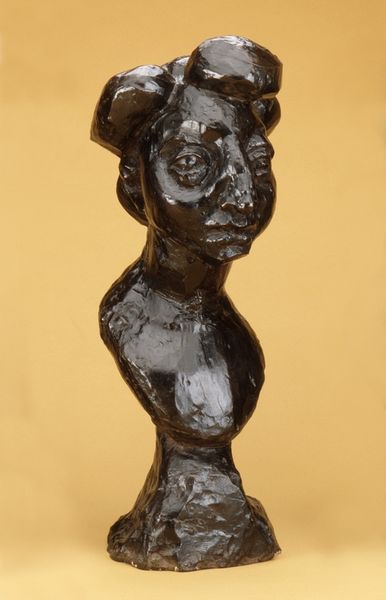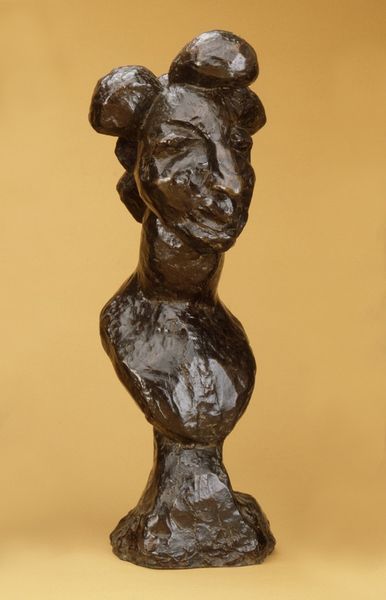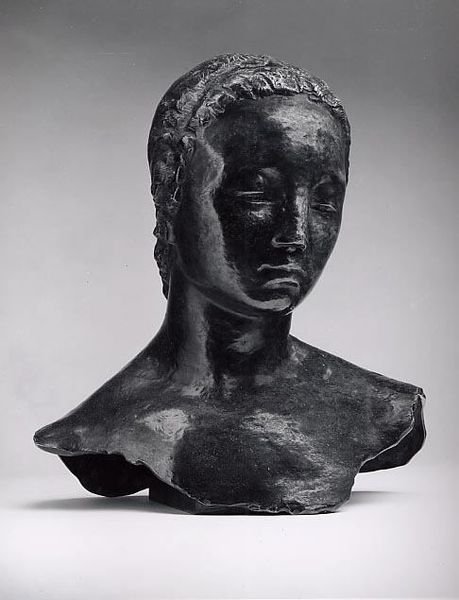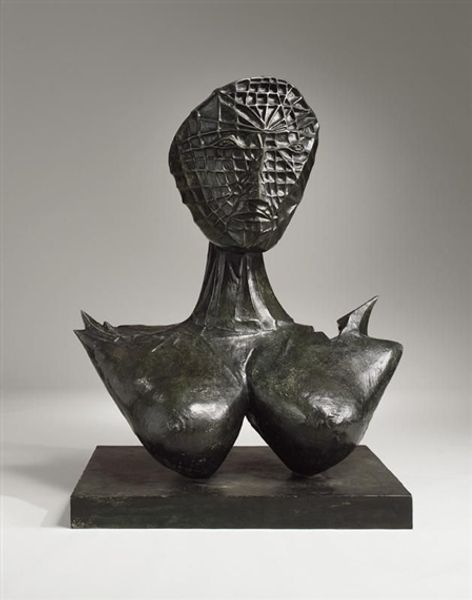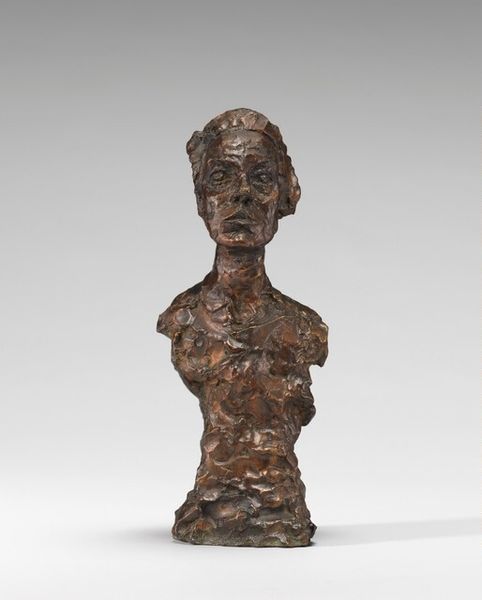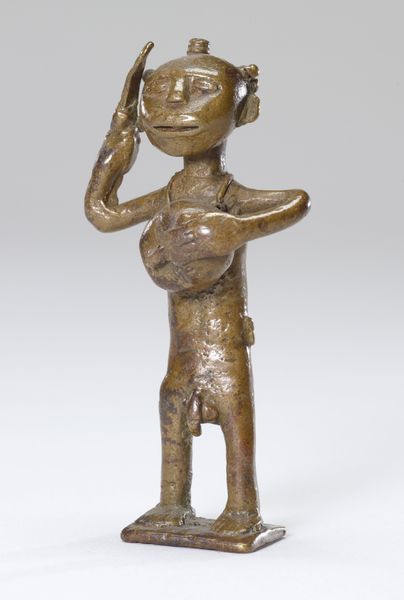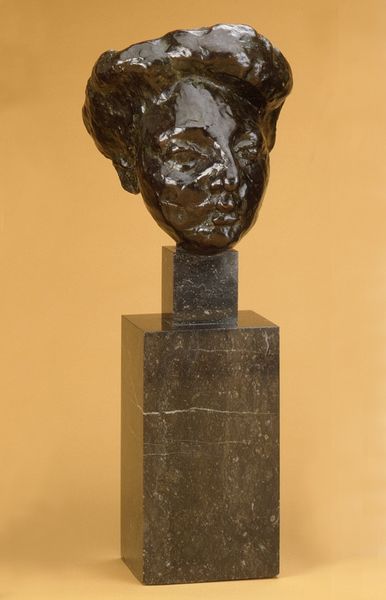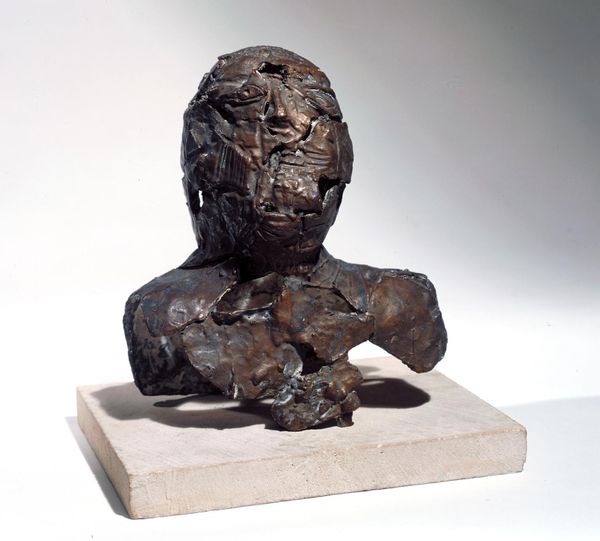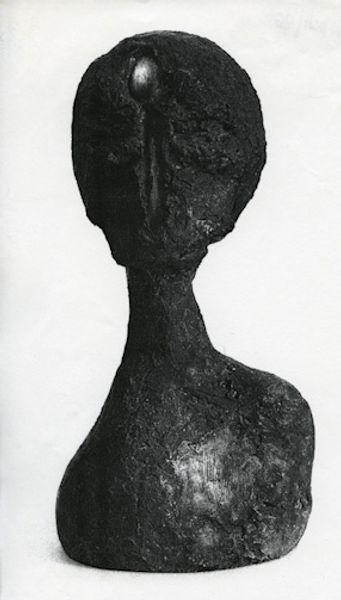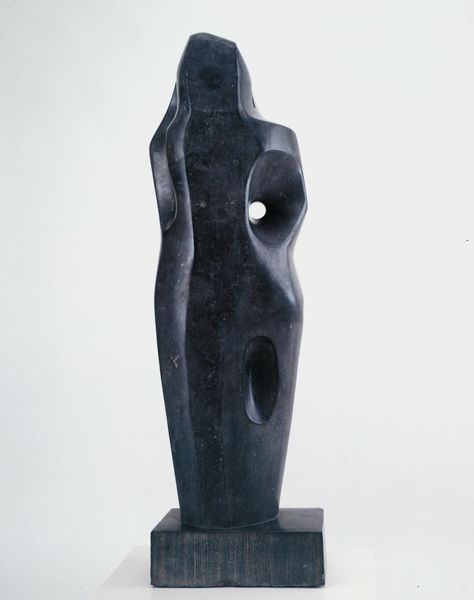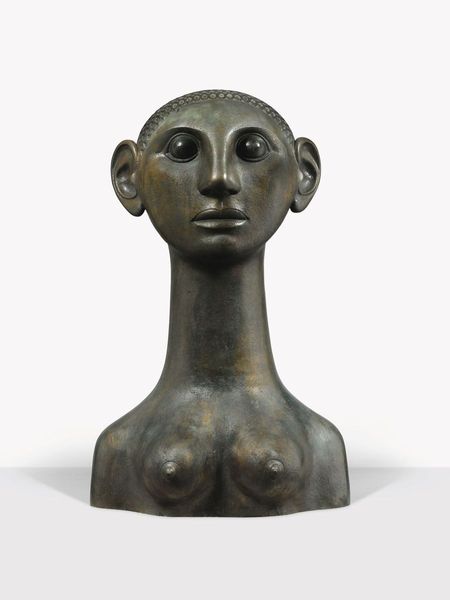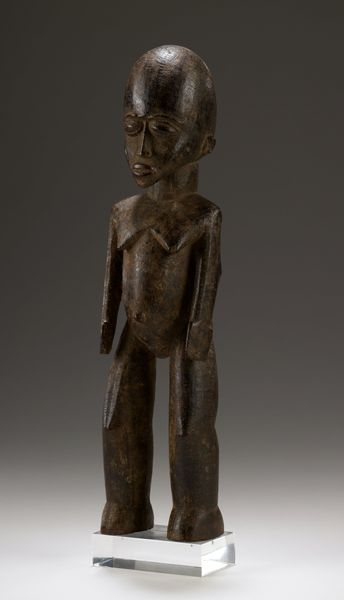
Copyright: Public domain US
Curator: This is Henri Matisse's bronze sculpture, "Jeannette V," created in 1913, now residing at LACMA. What's your initial reaction to it? Editor: The surface has this incredible fluidity to it, like cooled molten rock. The bronze captures a sense of movement even though it's a static portrait. I'm intrigued by the material and its transformative journey from liquid to solid. Curator: For me, it’s all in the eyes and the overall shape of the face. They seem both vulnerable and defiant. What cultural touchstones was Matisse drawing from to distill the human face to these striking elements? Editor: Well, we know that Matisse explored themes of abstraction versus representation at the time, right? He was interested in moving beyond faithful rendering, and into how raw materials – bronze here – can express ideas. What was possible with industrial processes. Curator: The face does echo ancient sculptural traditions of course. But the way the features are simplified, almost mask-like, also speaks to primal or archetypal identities. There's an intentional stripping away of specific personality, which opens it up to wider interpretations. What kind of statement was Matisse trying to make about art and industry through material consumption at that point in history? Editor: Interesting, but isn't that true of early Modernism? The ready made. The interest in primitive forms and simplified shapes wasn’t unique to him, though his understanding of craftsmanship sets him apart. Matisse spent years honing his craft through different medium and at different schools. The materiality betrays those labor origins! Curator: Indeed! The final casting and polishing would have required significant skilled labor as well. But back to the form: do you think it successfully channels emotions without relying on familiar portrait conventions? Editor: The exaggeration is there, as a result of working with industrial material perhaps. The surface texture adds a very sensual quality that is kind of a primal power. It suggests inner turbulence beneath a composed surface. Curator: So, while this "Jeannette" appears still, perhaps this bronze actually reflects a restless spirit, not just of the woman, but the epoch of its making, as well. Editor: Right. It leaves me thinking about the impact of industrial materiality on subjective interpretations of emotion through art-making.
Comments
No comments
Be the first to comment and join the conversation on the ultimate creative platform.
